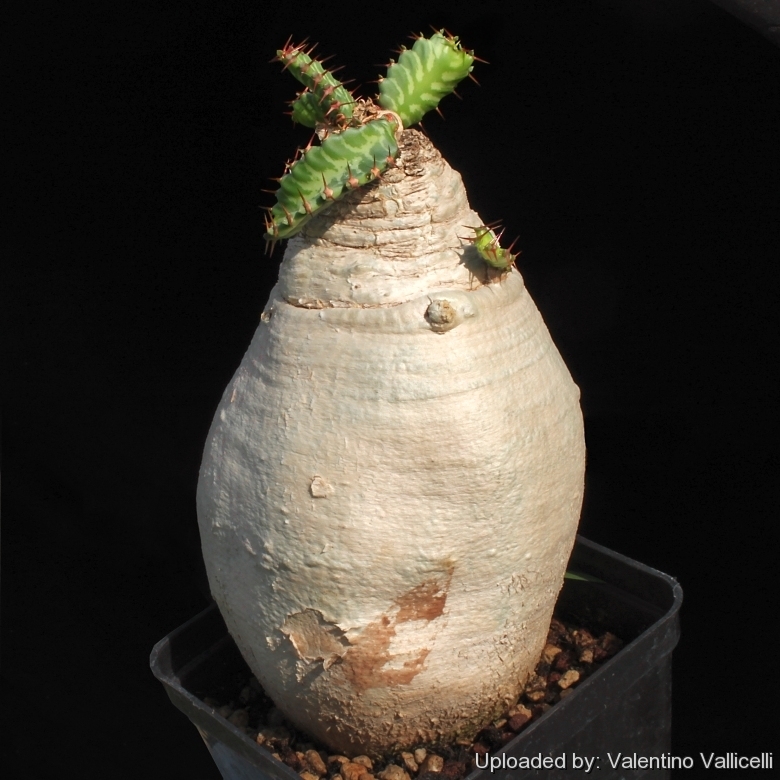
Euphorbia stellata Photo by: Valentino Vallicelli
Origin and Habitat: Eastern Cape (districts of Port Elizabeth, Albany and Peddie), South Africa
Habitat: It grows amongst grass and pebbles often grow fully exposed with the thick subterranean tuber, which embeds itself firmly in rocky crevices. As the name suggests, the branches radiate out from the tuber and lay prostrate against the ground.
Synonyms:
See all synonyms of Euphorbia stellata
back
Accepted name in llifle Database:Euphorbia stellata Willd.Sp. Pl., ed. 4 [Willdenow] 2(2): 886. 1799 [Dec 1799]Synonymy: 5
back
Description: It is a small geophytic species, both a caudiciform and medusoid Euphorbia. It is very similar in body shape to the closely related Euphorbia squarrosaSN|14899]]SN|14899]].
Caudex (tuberose rootstock): The short, conical to truncate stem merges with the thick turnip-shaped root forming a woody caudex 5-15 cm tall and 6-7 cm in diameter (or more). It is an underground water-storage organ so it is very resistant to drought. In cultivation the tuberous rootstock is raised over the ground so that it can be seen and is especially cultivated for its looks. Architecturally it is a real stunner.
Branches: Up to 15 cm long and 14 mm wide, tufted, prostrate and radiating on the top of the rootstock at ground level, strictly bilaterally flattened, two-ribbed, dark green with feathery, whitish marking. Margins winged with sinuate teeth about 6 mm apart.
Stipular spines: Paired, circular, quite separate up to 4 mm long.
Flower: Greenish-Yellow in cymes; Pedicel about 5 mm long. Cyathia 4 mm in diameter; nectar glands oblong, yellowish almost touching.
Fruit: About 3 x 5 mm wide, strongly lobed, base truncate.
Seed: 2 x 1,7 mm broad, ovoid in shape.
Subspecies, varieties, forms and cultivars of plants belonging to the Euphorbia stellata group
Bibliography: Major references and further lectures
1) Domitilla Raimondo “Red list of South African plants 2009” South African National Biodiversity Institute, 2009
2) James Cullen, Sabina G. Knees, H. Suzanne Cubey “The European Garden Flora Flowering Plants: A Manual for the Identification of Plants Cultivated in Europe, Both Out-of-Doors and Under Glass” Cambridge University Press, 11/Aug/2011
3) Urs Eggli “Illustrated Handbook of Succulent Plants: Dicotyledons” Springer, 2002
4) Doreen Court “Succulent Flora of Southern Africa” CRC Press, 01/Jun/2000
5) Hermann Jacobsen “Abromeitiella to Euphorbia” Blandford Press, 1960
6) Alain Campbell White, Robert Allen Dyer, Boyd L. Sloane "The succelent Euphorbisae (southern Africa)" Abbey garden press, 1941
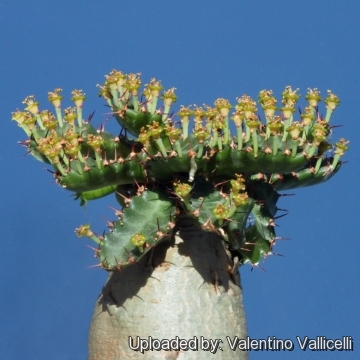 Euphorbia stellata Photo by: Valentino Vallicelli
Euphorbia stellata Photo by: Valentino Vallicelli Euphorbia stellata Photo by: Valentino Vallicelli
Euphorbia stellata Photo by: Valentino Vallicelli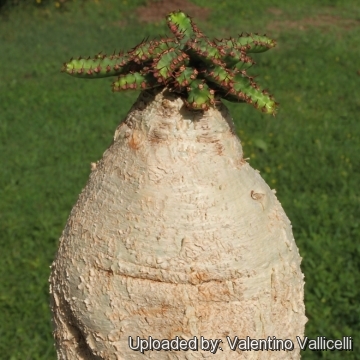 Euphorbia stellata Photo by: Valentino Vallicelli
Euphorbia stellata Photo by: Valentino Vallicelli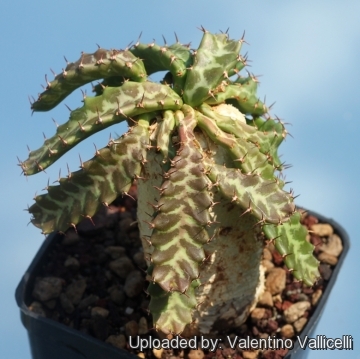 Euphorbia stellata Photo by: Valentino Vallicelli
Euphorbia stellata Photo by: Valentino Vallicelli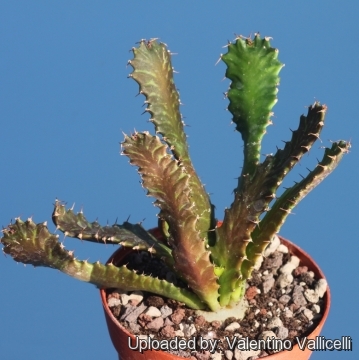 Euphorbia stellata Photo by: Valentino Vallicelli
Euphorbia stellata Photo by: Valentino Vallicelli Euphorbia stellata Photo by: Valentino Vallicelli
Euphorbia stellata Photo by: Valentino Vallicelli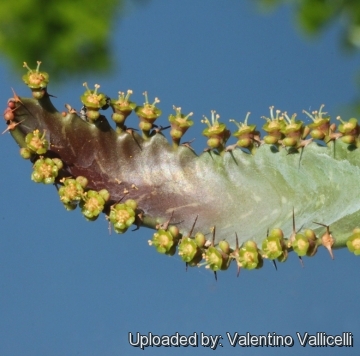 Euphorbia stellata Photo by: Valentino Vallicelli
Euphorbia stellata Photo by: Valentino Vallicelli Euphorbia stellata Photo by: Valentino Vallicelli
Euphorbia stellata Photo by: Valentino VallicelliCultivation and Propagation: Euphorbia stellataSN|21556]]SN|17359]] is cultivated as an ornamental, and is a particular favourite of succulent plant enthusiasts. Cultivation of this plant is the same as that for the other tuberous varieties of Euphorbia, (e.g. Euphorbia groenewaldiiSN|25150]]SN|25150]], Euphorbia deciduaSN|17359]]SN|21556]] etc.)
Growth rate: It is a slow growing species, but it it possible to increase the speed of growth to some extent by providing adequate amount of water, warmth, and fertilizer during the active growing season, but it’s susceptible to rotting if too wet and do not like a lot of water when they are on rest.
Soil and pots: It likes pots with generous drain holes, needs a very airy potting medium which mainly consists of non organic material such us clay, pumice, lava grit, and only a little peat or leaf-mould, seeing that the main trunk is planted with the majority of the roots below the caudex line. It's rare that it will use the upper third of its soil and often this area serves like a mulch or support for the stem.
Fertilization: Need a perfect fertilizer diet in summer. Use preferably a cacti and succulents fertilizer with high potassium content including all micro nutrients and trace elements or slow release fertilizer.
Exposure: This plant has an excellent heat tolerance, and need full sun to light shade exposures, it grows well even in full blasting sun, but can tolerate moderate shade, and a plant that has been growing in shade should be slowly hardened off before placing it in full sun as the plant will be severely scorched if moved too suddenly from shade into sun. The color of this plant is much more marked if grown in full sun.
Watering: Water regularly during the active growing season. No water should ever be allowed to stand around the roots. Keep almost completely dry in winter. However this spurge will tolerate dryness and can even thrives in poor, dry soils, but do better when grown in nutrient-rich soils with regular watering.
Hardiness: Some cold tolerance. This spurge has tolerated temperatures down to –6º C. However it can be difficult to get it to look its best without a good amount of heat and sun and so it is only really suited to the tropics (USDA Zones 9-12). It can be grown outdoors in frost-free climates.
Rot: Rot is only a minor problem with Euphorbias if the plants are watered and “aired” correctly. If they are not, fungicides won't help all that much.
Manteinance: Re-pot every two years and trim off the dead 'arms'.
Known hazards: The latex/sap is poisonous and can cause skin rash, itching and general discomfort, and they should be handled with caution, particularly when pruning.
Propagation: The plant can be reproduced by seeds or cuttings. The seedling is best left until it is larger as it will grow faster if the root is buried. The plant may be propagated by branch cuttings which will grow and flower. Usually cuttings will not form caudexes unless double cut. Once growth is strong, the top of the green shoot needs to be cut off again to force the plant to start a caudex. Some plant form a perfectly symmetrical caudex when grown from seed, but form distorted (but often more interesting) caudexes when grown from cuttings. If you remove an offset, remember to let it dry for some days, letting the wound heal (cuttings planted too soon easily rot before they can grow roots). Lay it on the soil and insert the stem end partially into the substrate. Try to keep the cutting somewhat upright so that the roots are able to grow downward. It is better to wash the cut to remove the latex.
Your Photos
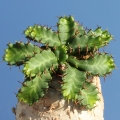
by Valentino Vallicelli

by Valentino Vallicelli
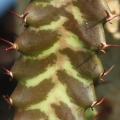
by Valentino Vallicelli

by Valentino Vallicelli

by Valentino Vallicelli























